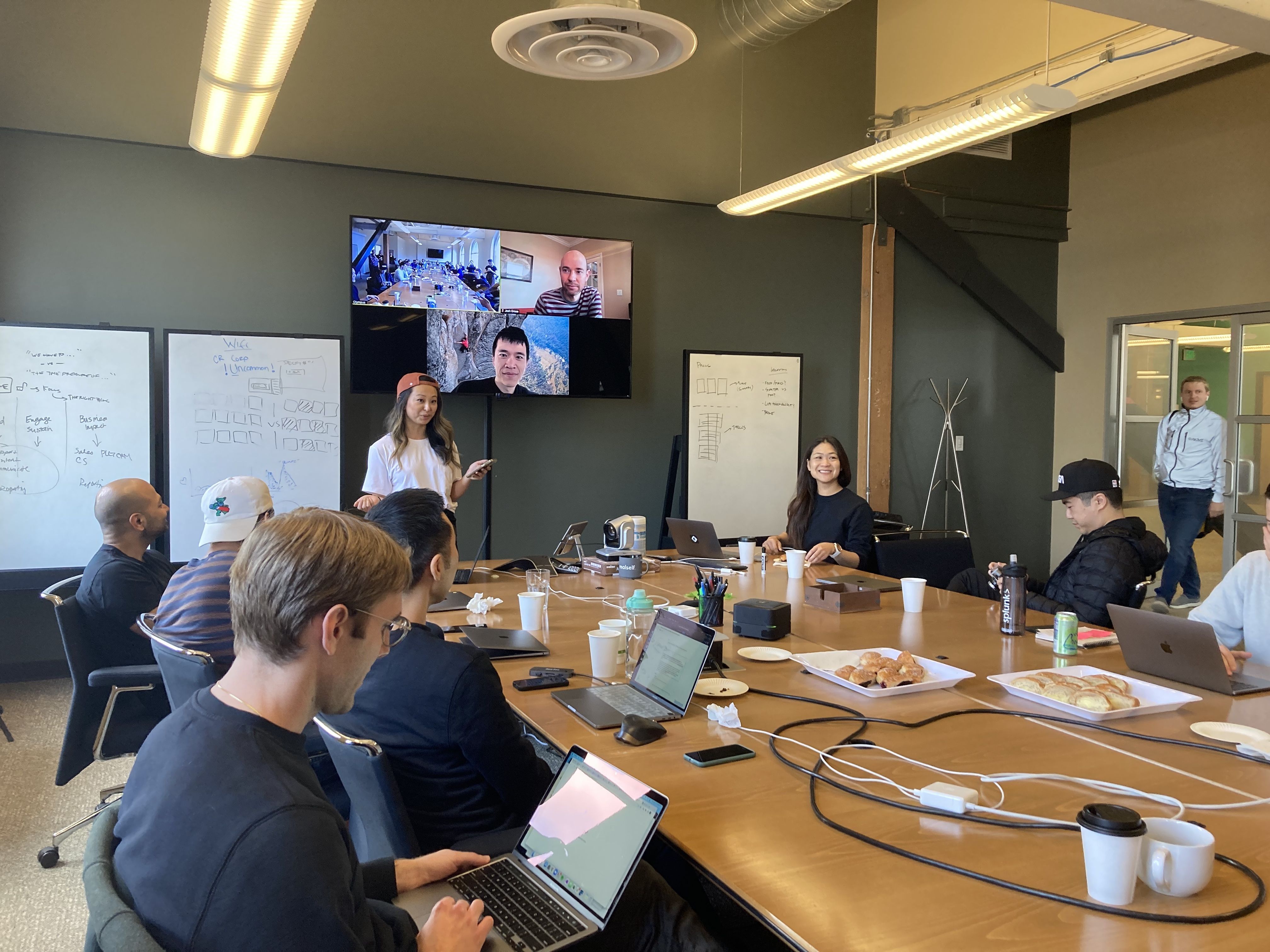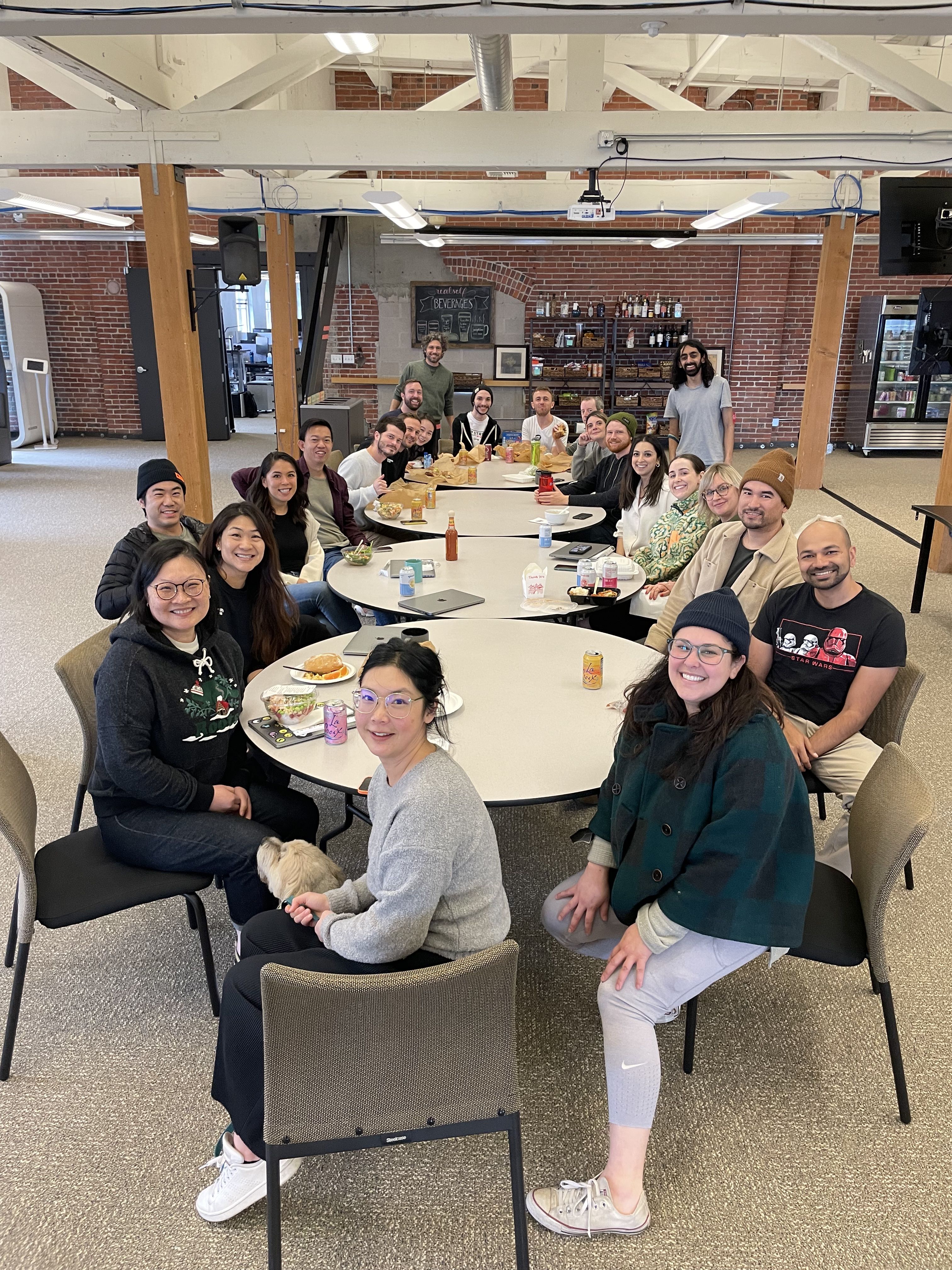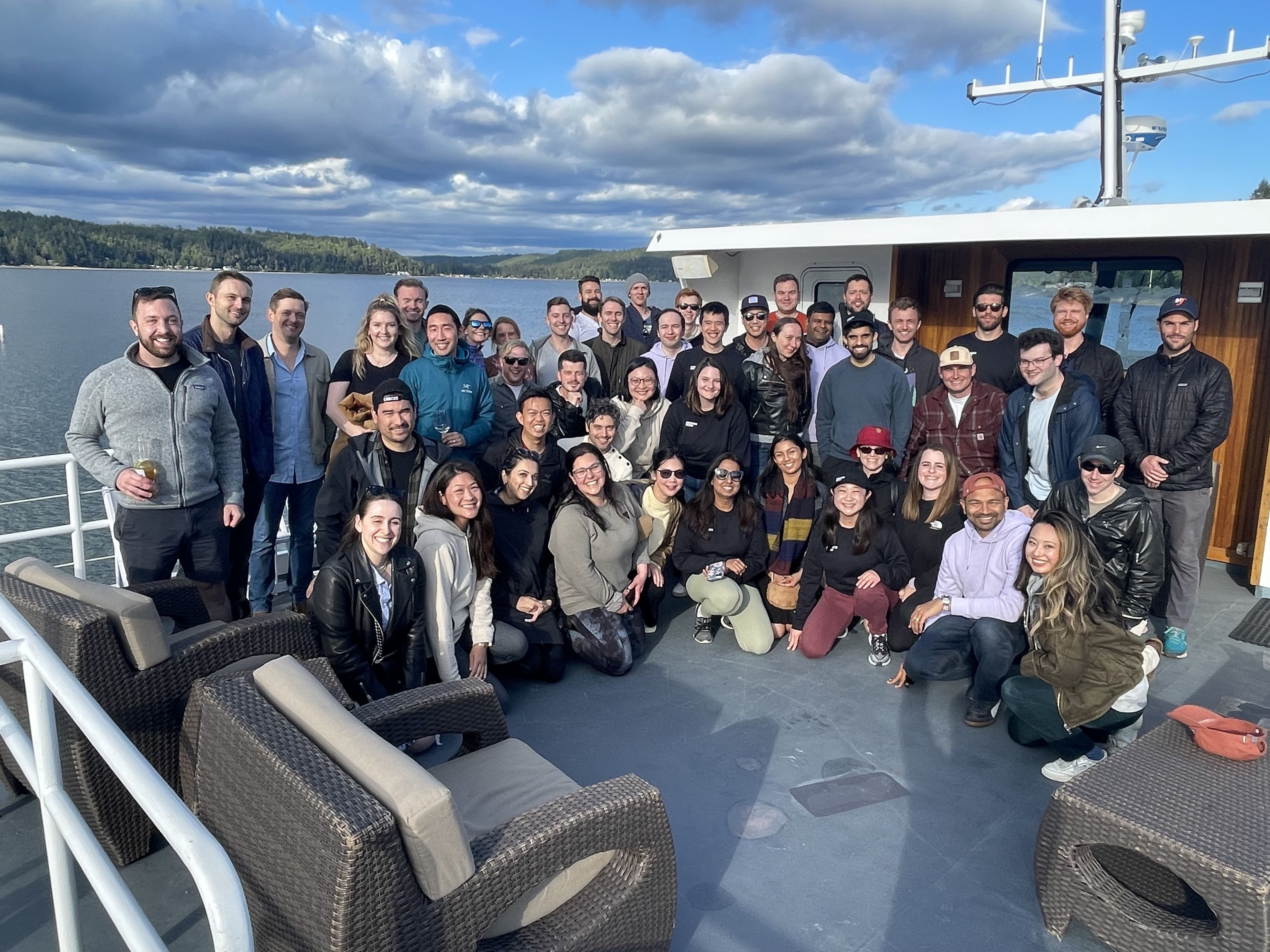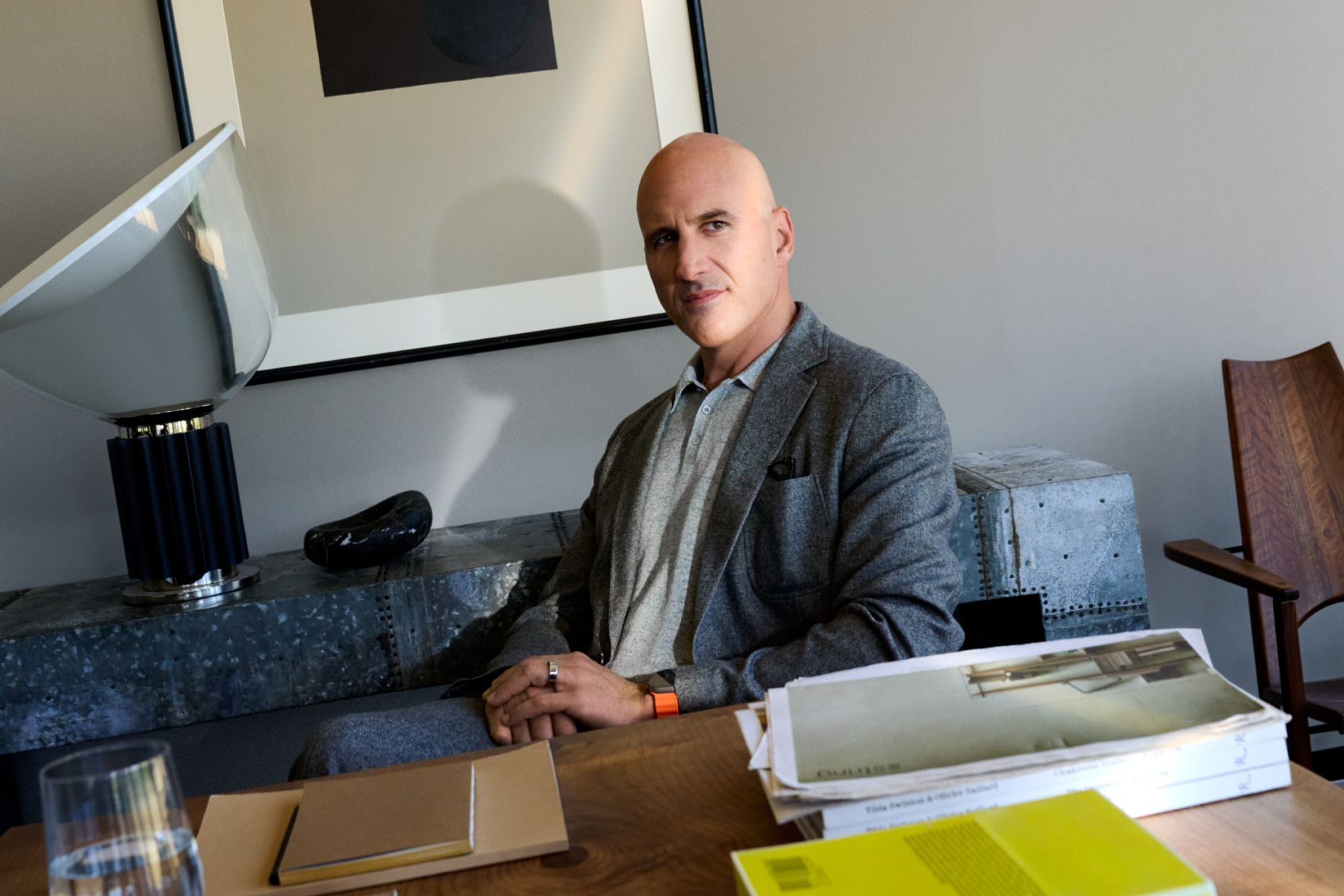Room with a View: How Linda Lian and Common Room Are Shaping the Future of Go-to-Market

Linda Lian was five years old when she stepped off a plane from China. In her hands she clutched a bundle of photos of her parents, though she had no memory of ever meeting them. A family friend led her through the busy Sky Harbor Airport to be reunited with her mother and father, who hugged her and took her to her new home in Phoenix.
Several years earlier, Lian’s parents, like millions of immigrants during the 1990s, had come to the U.S. in search of opportunity. After graduating from Arizona State, her father landed a job as a software engineer at Microsoft, while her mother worked what Lian describes as a series of “eclectic entrepreneurial side hustles,” before starting a career as an EKG technician.
“Growing up, I was always told there was nothing I couldn’t achieve.”
— Linda Lian, Common Room
Lian, who spent most of her childhood in the Seattle area, where she still resides, credits much of her outlook on life and work to her family’s experience as immigrants. She repeats words like “grit” and “resilience” when describing the traits handed down by her parents. She characterizes them as relentless proponents of the American dream—people who believe that anything is possible with enough determination and hard work.
“Growing up,” Lian says, “I was always told there was nothing I couldn’t achieve.”
It’s a message that reverberates daily in her work as CEO and co-founder of Common Room, a platform that’s revolutionizing how go-to-market teams see and influence the customer journey. Not only is she on the front lines every day talking to customers and evangelizing the product, she’s behind the scenes pushing her team to unlock their potential.
“As a leader, I’ve found that people bias toward, ‘No, this can’t happen,’” Lian says. “But if I’ve learned anything, it’s that there’s a 20 to 30 to 40 percent overachievement that you can get from a team or group of people by saying, ‘Actually, you can do this.’”

Linda Lian, CEO & co-founder of Common Room, leads a team meeting.
Josh Grose, who joined Common Room as Head of Growth in November of 2021, five months before the product’s official launch, has seen firsthand Linda’s refusal to take no for an answer. Whether it’s recruiting people to help her build Common Room, giving the product team the push they need to get a requested feature out the door, or flying across the country to meet with a potential customer, Grose sees her persistence and how it drives others.
“I would never bet against Linda,” Grose says. “She’s competitive, she’s smart. She lifts everyone around her. That’s a huge advantage for us.”
Uncommon Origins
In 2017, Rebecca Marshburn was working as a Product Marketing Manager at Amazon Web Services. She was a few months into the job and already busy with a number of projects. One of them involved launching a product called the serverless application repository.
The task wasn’t exactly simple. First, Marshburn had to find enough customers who were not only willing to try the unreleased product, but who would actually use the repository, contribute to it, and then tell the world how great their experience was.
Her manager came to her and asked what she needed help with. Marshburn took a deep breath and said, “I need a deck that tells customers what this is, why it’s important, and why they should get on the phone with us.” The problem, she told her manager, wasn’t that she didn’t know how to make one. It was that she hadn’t been able to find the time.
Thirty minutes later, she received an email with exactly the deck she was looking for. The sender was Linda Lian. What Marshburn had been putting off for days, compiling information and trying to find the best approach, Lian—a first-time PMM who joined the company two months after Marshburn—had created in a matter of minutes.
“I knew from day one that Linda was special. It was clear to anyone who worked with her that she would be leading a team one day, if not an entire company.”
—Rebecca Marshburn, Common Room
Over the next two years, Marshburn watched Lian make an impact everywhere she went. Whether it was volunteering to lead additional product launches, creating reports for the sales team filled with recommendations on business development strategy, or bringing together technical leaders to update AWS’s messaging around open-source and modern application development, Lian’s responsibilities grew, even if her title stayed the same.
“I knew from day one that Linda was special,” says Marshburn, who in 2021 rejoined Lian as Common Room’s Head of Community. “It was clear to anyone who worked with her that she would be leading a team one day, if not an entire company.”

Common Room CEO & Co-Founder Linda Lian.
Lian, for her part, didn’t always know she wanted to be a founder. Throughout her childhood and early career, she struggled with imposter syndrome. That she saw herself as an outsider gave her an “unbiased, almost detached” perspective, which she says has been useful in building a company, but it didn’t curb her feelings of drifting or help her feel more secure.
“I started to realize: I wanted to be a creator, not a critic. I wanted to go and build something.”
—Linda Lian, Common Room
Growing up, Lian was a self-described loner who usually had her nose in a book. An only child, she jokes that her babysitter was the public library; her parents would drop her off on their way to work, and she would spend hours reading novels and books cataloging plants and animals. It was in these moments she developed another life skill: the ability to be alone.
“Being a founder or CEO can be lonely,” she says. “Some of the main problems and challenges no one else in your organization really has. That ability to be okay in those moments of discomfort and loneliness has helped me a lot.”
After studying history and literature at Harvard, Lian began her career in finance, first as an analyst at Morgan Stanley, and then as an investor at an early-stage VC firm. She spent those years working long hours, poring over financials and grinding out reports. Although she learned a lot about business strategy, she calls it the most alienating period of her life.
“In finance, you spend a lot of time opining on numbers, looking at things from an outside perspective, but you can’t really affect anything,” she says. “That’s when I started to realize: I wanted to be a creator, not a critic. I wanted to go and build something.”

Members of the Common Room team.
Customer Connection
Lian joined AWS in September of 2017. And while transitioning from finance to product marketing wasn’t a magic cure-all for her restlessness (“I went from helping CEOs buy and sell multi-billion-dollar companies to all of a sudden writing launch blogs all day"), her time at Amazon put her on a clear path for the first time in her career, in two important ways.
Number one, it was where she learned to deeply consider and orient her efforts around the group of people who would define her work from that point forward: customers.
Number two, it showed her a gap in the market that led her to found Common Room.
Inspired by Amazon’s own focus on customer obsession, Common Room’s first company value is “Be Customer-centric.” If you spend enough time talking to people at Common Room, it becomes clear that customers drive nearly every action and decision, from which features get prioritized to how team members celebrate wins. It’s also clear that that customer-centricity comes directly from Lian, who developed it while at Amazon.
“When I talk about customer obsession, what I’m really saying is, ‘How do we be honest with ourselves about whether or not we’re creating value?’”
—Linda Lian, Common Room
As a product marketer, Lian learned that go-to-market strategy revolves around a single source of truth: customers. They’re the ones who can answer whether a piece of messaging resonates, whether a feature provides value. She made it her mission to find out everything she could about customers—what they loved, what they hated, where they needed help.
“When I talk about customer obsession,” Lian says, “what I’m really saying is, ‘How do we be honest with ourselves about whether or not we’re creating value?’”
That depth of empathy for what a customer needs and hopes for, what they’re asking for and what they deserve—that’s embedded in Linda’s DNA.Rebecca Marshburn,
Head of Community at Common Room

Common Room CEO & Co-Founder Linda Lian.
Marshburn watched that obsession grow to the point that one year, at AWS re:Invent, when a customer’s logo was left off of a keynote slide after they had provided a quote, she saw Lian fighting back tears. Instead of accepting the mistake as something that happens a dozen times over the course of any conference, Lian promised the customer they would “make it right,” and then worked with her team to add the logo in post-production for anyone watching online.
“That depth of empathy for what a customer needs and hopes for, what they’re asking for and what they deserve—that’s embedded in Linda’s DNA,” Marshburn says.
While Lian was nurturing her customer obsession, Developer Operations had become one of the fastest-growing niches in tech, with a suite of new technologies making DevOps its own cottage industry. Of those technologies, none were being adopted faster or as fanatically as Amazon Web Services. With a passionate and growing customer base, AWS quickly became more than a cloud computing solution; it grew into a platform for economic opportunity, used, loved, and evangelized by a global community of developers.
At the same time, those devoted customers, seeing and enjoying the rise of companies like Netflix and Spotify, had begun to expect a more modern, consumer-like experience. They wanted to engage with their favorite brands on Twitter. They wanted to try and buy products on their own terms, without needing to talk to a sales rep. They wanted to feel a sense of connection with brands and products, even the ones they used for work.
Lian knew this shift was happening, because she talked to customers every day. She saw developers talking about AWS in communities like Reddit and GitHub, asking and answering each other’s questions, evangelizing the product among their peers. But she had no way of organizing or acting on their feedback. Even worse, when she went into Salesforce to look for them—to understand who they were, what company they worked for, what their product experience had been like—she found no trace of them.
“Because they weren’t considered leads or customers,” she says, “it was like they didn’t exist.”
She saw community building as a “modern covenant” between brands and consumers, with the most successful companies being those that could create meaningful connections with customers. But there was a huge gap between what she saw on the horizon and what go-to-market teams could do with current technology. In the enterprise market, especially, that gap looked more like a canyon—and that’s where she saw her opportunity.
A Unified View
Index partner Danny Rimer remembers his first conversation with Lian, which took place over Zoom in the summer of 2020. One of the lessons he learned quickly during the pandemic was the rarity of a founder who could resonate through a screen. Not only were he and the other partners “blown away” by Linda’s eloquence and charm, they shared a sense of excitement hearing her describe her vision for Common Room.
“That story of looking at community within the enterprise struck us as very different,” Rimer says. “Enterprise companies usually talk about customers in terms of support or sales, maybe touchpoints at a conference. To think of customers as members of a community who can be champions or challengers, who can be loyal to you or angry at you, was a completely new take on what the enterprise represented.”
“It was remarkable that someone who was a founder for the first time, who didn't have a ton of professional experience, was able to get some very strong individuals in their respective fields to join her on this journey.”
—Danny Rimer, Index Ventures
By that point, Lian had convinced Common Room co-founders Francis Luu, Viraj Mody, and Tom Kleinpeter to join the company. They brought decades of design and engineering experience from roles at Facebook, Microsoft, and Dropbox. Lian had found them through LinkedIn and cold-pitched them on her vision of building a platform for community.
As Rimer says, “It was remarkable that someone who was a founder for the first time, who didn't have a ton of professional experience, was able to get some very strong individuals in their respective fields to join her on this journey.”

The Common Room founding team (from left to right) Tom Kleinpeter, Viraj Mody, Francis Luu, and Linda Lian.
For Lian and her team, innovating in a new area meant that before they could begin to think about features or benefits, they had to identify the problem Common Room was trying to solve. Lian had originally envisioned Common Room as a place for community—what she lovingly describes as a “Slack-plus-forum baby.” To test this idea, she spent a lot of time working with design partners, learning how a solution like that could provide value.
One day, during the period after her co-founders agreed to join but before they officially came on board, Lian was talking to Claire Butler, Figma’s Senior Director of Marketing. Butler, who had been using the product for months, had already given extensive feedback, but Lian, sensing “something off” about their conversation, asked her to step back and “tell me what you really think.” At that point, Lian says, the truth came pouring out. Butler explained that Figma already had a Slack, a Discord server, a customer forum. They didn’t need another interface. They needed a way to bring together all of their users and fans.
“I think the worst thing you could ever do is ignore that undeniable truth of what your customers are telling you they need, or have so much ego that you're unable to see beyond your own ‘vision’ of how things should be."
—Linda Lian, Common Room
On the day her co-founders officially joined the company, Lian, who had recruited them based on her original vision, surprised them with the news that they were pivoting the business. Instead of building a place for community, she announced, they would create a completely new type of solution that helps customers tie all of their disparate and fragmented channels together to give a unified view of everyone interacting with their brand and product.
That experience has repeated itself countless times at Common Room. While the team remains focused on its vision of creating a unified place for customer data, the product roadmap is being continually reimagined and reshaped based on customer feedback. Every piece of feedback is categorized into parts of the user journey, which form their own investment areas. The areas deemed most valuable, that solve actual customer pain, get prioritized.
“I think the worst thing you could ever do is ignore that undeniable truth of what your customers are telling you they need, or have so much ego that you're unable to see beyond your own ‘vision’ of how things should be,” Lian says.

The Common Room team.
On March 31st, 2022, Common Room officially launched with general availability. By that point, the platform had been adopted by a who’s who of category champions, including Notion, Elastic, Figma, and others. Along with giving important feedback, those early customers shared glowing reviews that inspired other companies to join the movement—and that let Lian and her team know they were on the right path. Lian knows that this couldn’t have happened if they hadn’t first put in the work to understand the real problems they needed to solve.
“I have no biases—nothing is precious to me,” she says. “I’m always looking forward, trying to find the truth. And I believe that to find that truth, you have to be able to examine a lot of different things at once, to listen closely, to figure out what’s really happening.”
Empowering Growth
Today, Common Room has evolved from its community roots into a powerful platform that’s transforming the way go-to-market teams see and influence the customer journey. Gone are the days of marketing and sales teams working in silos, making decisions based on sketchy CRM data that misses a ton of inputs across the user journey. Sales reps looking for intent signals no longer need to jump from LinkedIn to GitHub to Slack, or ping their product teams for critical information about adoption data and how to make sense of it.
“Go-to-market teams are sitting on these huge goldmines of data. We’re making it easy for people to show up with their pans and get what they need.”
—Josh Grose, Common Room
Go-to-market teams can now use Common Room to get a full picture of the customer journey. It centralizes, anonymizes, and enriches all customer data—including product data, CRM data, and digital interactions—and uses AI to create a unified profile for every person and company interacting with the organization. It then automatically scores those leads, making it easy for sales reps to find high-intent buyers, filter and tag them based on firmographic details, and add them to personalized sequences in tools like Outreach and Salesforce.
Josh Grose, Common Room’s Head of Growth, spends his days talking to marketing and sales leaders at the biggest companies in the world. They tell him their old playbooks and tactics don’t work anymore. They know the modern buying journey has changed, but they’re not sure what it looks like or how to reach customers. Grose sees their mouths drop when he shows them what Common Room can do.
“Go-to-market teams are sitting on these huge goldmines of data,” he says. “We’re making it easy for people to show up with their pans and get what they need.”
Danny Rimer points again to Common Room’s customers, which include many of the most influential, forward-thinking companies in the world: “They’re the ones every Fortune 1000 looks at and says, ‘We want to be like them. We want to be part of their tech stack.’” He’s excited to see Common Room grow as its approach becomes more widespread, and the message Lian has worked so hard to evangelize crosses the chasm into mainstream adoption.

Common Room CEO & Co-Founder Linda Lian.
“It’s one thing to be this maniacal ‘creator’ with really perfectionistic tendencies. It’s another to inspire a group of people to achieve something they can’t even dream of. I want to be in the latter camp.”
—Linda Lian, Common Room
Once an outsider, Lian is still learning how to lead a company. As much as she believes in pushing people to realize their potential, she understands that not everyone is wired like her. She’s grateful to have veteran leaders who not only help her model the parts of running a business that are most important to her—listen to customers, do great work at high speeds—but who provide a different perspective, and who hold her accountable.
“I’ve learned a lot about how to be a compassionate leader,” she says. “It’s one thing to be this maniacal ‘creator’ with really perfectionistic tendencies. It’s another to inspire a group of people to achieve something they can’t even dream of. I want to be in the latter camp."
Rebecca Marshburn, who has looked up to Lian since their early days together at AWS, says she’s inspired most of all by Lian’s capacity to learn. Whether it’s learning what customers need, learning how to launch a product, or learning how to take Common Room to the next level as a company, she sees no end to Lian’s growth as a founder and leader.
“The really exciting thing about Linda,” Marshburn says, “is that she’s just getting started.”
Published — Jan. 25, 2024
-

-
